 |
Home | Charity | Feedback |
USA: Massachusetts:
Boston,
Mount Greylock,
Pittsfield
Boston, Massachusetts, USA: The humble tea started it all by Prakash Bang, Editor in Chief 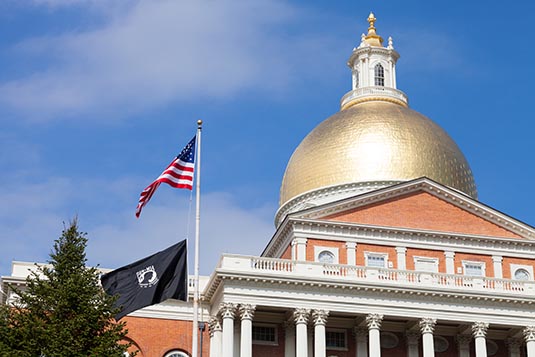 Seeds of the great American Revolution were sowed in Boston. The Boston Tea Party (initially referred to by John Adams as simply "the Destruction of the Tea in Boston") was a nonviolent political protest by the Sons of Liberty in Boston, on December 16, 1773. Disguised as Indians, the demonstrators destroyed the entire supply of tea sent by the East India Company in defiance of the American boycott of tea carrying a tax the Americans had not authorized. They boarded the ships and threw the chests of tea into Boston Harbor, ruining the tea. The British government responded harshly and the episode escalated into the American Revolution. 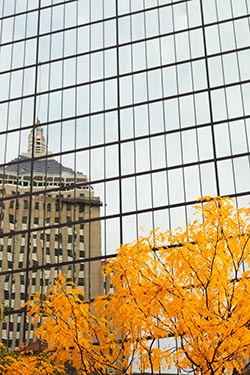 I was to travel in the 3 New England States (Massachusetts, New Hampshire & Vermont) in the USA. The objective was to witness the fall foliage of the region. The city of Boston is an ideal gateway. I took a train from New York City and in about 4 hours alighted at Boston’s Back Bay station. I was hosted at Boston Park Plaza Hotel on Arlington Street. It was 10-minute walk from the station. Rich in history, The Boston Park Plaza Hotel & Towers has distinguished itself with classic elegance and personal service. The property is conveniently located and is only a few blocks away from everything interesting.
I was to travel in the 3 New England States (Massachusetts, New Hampshire & Vermont) in the USA. The objective was to witness the fall foliage of the region. The city of Boston is an ideal gateway. I took a train from New York City and in about 4 hours alighted at Boston’s Back Bay station. I was hosted at Boston Park Plaza Hotel on Arlington Street. It was 10-minute walk from the station. Rich in history, The Boston Park Plaza Hotel & Towers has distinguished itself with classic elegance and personal service. The property is conveniently located and is only a few blocks away from everything interesting.
By the time I checked-in and freshened up it was 4:30 PM. I was scheduled to take the Boston Duck Tour that would depart from the Prudential Centre at 5 which was a few blocks away. The fun begins as soon as you board your "DUCK", a W.W.II style amphibious landing vehicle. First, you'll be greeted by one of their tour conductors (they call them conDUCKtors) who narrate the tour. Our guide had a brilliant sense of humour, making the 80-minute trip all the more interesting. You'll cruise by all the places that make Boston the birthplace of freedom and a city of firsts, from the golden-domed State House to Bunker Hill and the TD Banknorth Garden, Boston Common and Copley Square to the Big Dig, Government Center to fashionable Newbury Street, Quincy Market to the Prudential Tower, and more. And then we splash into the Charles River for a breathtaking view of the Boston and Cambridge skylines. I was 60 minutes on land and 20 minutes on water. 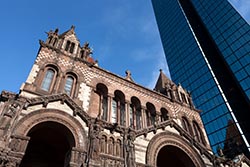 Dinner that evening was hosted at Summer Shack on Dalton Street. It’s a must visit eatery in Boston, especially if you are lover of sea food. Their lobsters are heavenly.
Dinner that evening was hosted at Summer Shack on Dalton Street. It’s a must visit eatery in Boston, especially if you are lover of sea food. Their lobsters are heavenly.
After breakfast the next morning, I took a cab to reach Faneuil Hall. I was scheduled to take the 10AM Freedom Trail. Volunteers in period costume take you around Boston’s famous historical sites. Unfortunately, the morning trip was cancelled for the reasons best known to the organisers. But there was hope – it was easy to do the trail on my own – thanks to the well-marked signs. 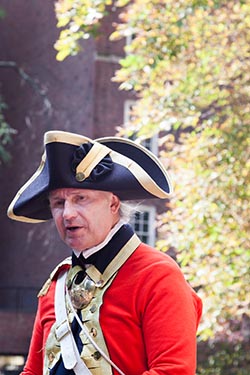 The Freedom Trail is a 2.5-mile, brick-lined route that leads you to 16 historically significant sites — each one an authentic treasure. The route takes you to museums and meetinghouses, churches, and burying grounds. It's a nice way to learn about the American Revolution.
The Freedom Trail is a 2.5-mile, brick-lined route that leads you to 16 historically significant sites — each one an authentic treasure. The route takes you to museums and meetinghouses, churches, and burying grounds. It's a nice way to learn about the American Revolution.
Faneuil Hall is almost the mid-point of the trail. Since I had limited time on hand, I did part on my right and part on my left. I avoided crossing the Charlestown Bridge that would have lead me to the Bunker Hill Monument. There are 16 official sites on the Trail: Boston Common, Massachusetts State House, Park Street Church, Granary Burying Ground, King’s Chapel, King’s Chapel Burying Ground, Benjamin Franklin Statue & Boston Latin School, Old Corner Book Store, Old South Meeting House, Old State House, Site of Boston Massacre, Faneuil Hall, Paul Revere House, Old North Church, Copp’s Hill Burying Ground, Bunker Hill Monument and USS Constitution. I could cover a few of them. 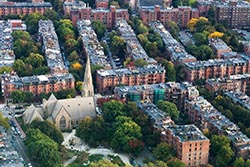 Established in 1634, Boston Common is America’s oldest public park. Puritan colonists purchased the land rights to the Common’s 44 acres from the first settler of the area, Anglican minister William Blackstone. The price was 30 pounds, and each homeowner paid him six shillings. The Boston Common was a place for celebration as well. Bonfires and fireworks celebrated the repeal of the Stamp Act and the end of the Revolutionary War. Boston Common continues to be a stage for free speech and public assembly.
Established in 1634, Boston Common is America’s oldest public park. Puritan colonists purchased the land rights to the Common’s 44 acres from the first settler of the area, Anglican minister William Blackstone. The price was 30 pounds, and each homeowner paid him six shillings. The Boston Common was a place for celebration as well. Bonfires and fireworks celebrated the repeal of the Stamp Act and the end of the Revolutionary War. Boston Common continues to be a stage for free speech and public assembly.
Designed by Charles Bulfinch, the Massachusetts State House was completed in Boston on January 11, 1798, and widely acclaimed as one of the more magnificent and well-suited buildings in the country. The land for the State House was originally used as John Hancock’s cow pasture. The Massachusetts State House’s golden dome, its most distinct feature, once made of wood was later overlaid with copper by Paul Revere. It was covered with 23 karat gold leaf for the first time in 1874 and painted black during World War II to protect the city from bombing attacks. The State House dome was most recently gilded in 1997. 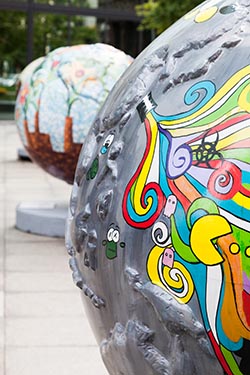 Christened the Cradle of Liberty, Faneuil Hall’s vital role in revolutionary politics hadn't been part of its original plans, but they became an intricate collection of events that shaped the nation's history. Peter Faneuil, a wealthy merchant, built Faneuil Hall as a center of commerce in 1742. While Boston's landmark market stalls on the first floor house successful shops, today it is the second floor meeting hall that has the greater legacy. It was at Faneuil Hall in 1764 that Americans first protested against the Sugar Act and the Stamp Act, setting the doctrine that would come to be known as no taxation without representation. Gatherings to protest the Stamp Act, the Townshend Act, and the Redcoat occupation would follow, as would one of the first in a series of meetings that would culminate in the Boston Tea Party. The statue of Samuel Adams in front of Faneuil Hall could not be better placed, for it was here that he did his greatest work, dominating town meetings and staging a funeral for the victims of the Boston Massacre.
Christened the Cradle of Liberty, Faneuil Hall’s vital role in revolutionary politics hadn't been part of its original plans, but they became an intricate collection of events that shaped the nation's history. Peter Faneuil, a wealthy merchant, built Faneuil Hall as a center of commerce in 1742. While Boston's landmark market stalls on the first floor house successful shops, today it is the second floor meeting hall that has the greater legacy. It was at Faneuil Hall in 1764 that Americans first protested against the Sugar Act and the Stamp Act, setting the doctrine that would come to be known as no taxation without representation. Gatherings to protest the Stamp Act, the Townshend Act, and the Redcoat occupation would follow, as would one of the first in a series of meetings that would culminate in the Boston Tea Party. The statue of Samuel Adams in front of Faneuil Hall could not be better placed, for it was here that he did his greatest work, dominating town meetings and staging a funeral for the victims of the Boston Massacre.
In 1688, the Royal Governor built King’s Chapel on the town burying ground when no one in the city would sell him land to build a non-Puritan church. Boston's first King’s Chapel was a tiny church used by the King’s men who occupied Boston to enforce British law. By 1749, the building was too small for the congregation, which had grown to include a number of prominent merchants and their families. The present stone structure was built around the original wooden church, which was then disassembled and thrown piece by piece out the windows of the new construction. 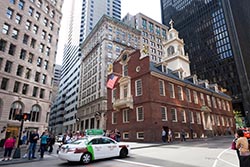 At the heart of Revolutionary Boston, the Old State House, was at the center of ideas and events that sparked the American Revolution. Enduring ideas about the proper role of government were explored and debated by Boston's leading patriots. In the years before the Revolution, freely elected representatives from all over the Massachusetts Colony met at the Old State House and debated British rule and taxation. Led by Samuel Adams, the representatives frequently clashed with the Royal Governor, whose Council Chamber was also on the second floor of the Old State House, as were the judicial courts.
At the heart of Revolutionary Boston, the Old State House, was at the center of ideas and events that sparked the American Revolution. Enduring ideas about the proper role of government were explored and debated by Boston's leading patriots. In the years before the Revolution, freely elected representatives from all over the Massachusetts Colony met at the Old State House and debated British rule and taxation. Led by Samuel Adams, the representatives frequently clashed with the Royal Governor, whose Council Chamber was also on the second floor of the Old State House, as were the judicial courts.
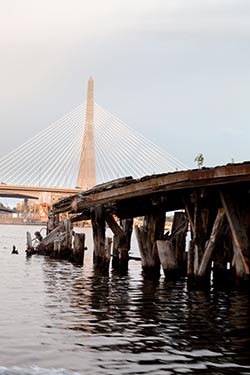 The Boston Massacre begins in 1770 when tensions were high between Bostonians and Redcoats sent to Boston in the wake of the Stamp Act riots. Occasionally things would erupt into fist fights and angry confrontations. On March 5, Private White, on guard at the Custom’s house in King’s Street (now State Street) left his sentry box and struck young Edward Garrick in the face with the butt of his musket for insulting his commanding officer. White soon found himself surrounded by an angry mob that hurled taunts and snowballs at him - and launched the Boston Massacre. Samuel Adams held funerals for the victims and organized a vigorous propaganda effort, labeling the event a bloody massacre. His second-cousin John Adams defended the soldiers in court and all but two were acquitted of all charges. Today, a simple ring of stones on the Freedom Trail marks the site of the Boston Massacre and reenactments take place on the anniversary every year.
The Boston Massacre begins in 1770 when tensions were high between Bostonians and Redcoats sent to Boston in the wake of the Stamp Act riots. Occasionally things would erupt into fist fights and angry confrontations. On March 5, Private White, on guard at the Custom’s house in King’s Street (now State Street) left his sentry box and struck young Edward Garrick in the face with the butt of his musket for insulting his commanding officer. White soon found himself surrounded by an angry mob that hurled taunts and snowballs at him - and launched the Boston Massacre. Samuel Adams held funerals for the victims and organized a vigorous propaganda effort, labeling the event a bloody massacre. His second-cousin John Adams defended the soldiers in court and all but two were acquitted of all charges. Today, a simple ring of stones on the Freedom Trail marks the site of the Boston Massacre and reenactments take place on the anniversary every year.
A fascinating historic cemetery, King's Chapel Burying Ground is located next to King’s Chapel on Tremont Street. King’s Chapel Burying Ground was Boston Proper’s only burying place for nearly 30 years. It is older than the Granary Burying Ground. As old as Boston itself, King’s Chapel Burying Ground boasts such illustrious residents as John Winthrop, Massachusetts’ first Governor and Mary Chilton, the first woman to step off the Mayflower. 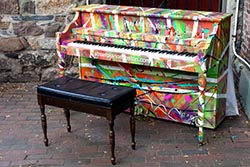 After doing the rounds for about 3 hours I reached my hotel walking past Beacon Hill (an upscale residential area), Boston Common and Boston Public Garden. After a little rest, I commenced my walk to Copley Square.
After doing the rounds for about 3 hours I reached my hotel walking past Beacon Hill (an upscale residential area), Boston Common and Boston Public Garden. After a little rest, I commenced my walk to Copley Square.
Copley Square, named for painter John Singleton Copley, is a public square in Boston's Back Bay neighborhood, bounded by Boylston Street, Clarendon Street, St. James Avenue, and Dartmouth Street. A remarkable number of important Boston educational and cultural institutions were originally located adjacent to (or very near) Copley Square, reflecting 19th-century Boston's aspirations for it as a center of culture and progress. These include the Museum of Fine Arts, the Massachusetts Institute of Technology, Harvard Medical School, the New England Museum of Natural History (today's Museum of Science), Trinity Church, the New Old South Church, the Boston Public Library, the American Academy of Arts and Sciences, the Massachusetts Normal Art School (today's Massachusetts College of Art), the Horace Mann School for the Deaf, Boston University, Emerson College and Northeastern University. 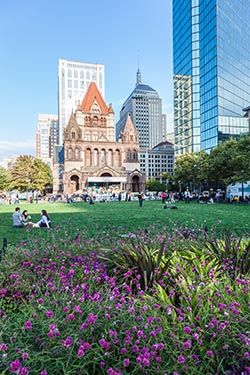 Before the sun could set, I was at the Prudential Towers to visit the Skywalk Observatory. Unfortunately, the observatory was closed for the evening due to a private event. However, I was lucky to be escorted to ‘Top of the Hub’ lounge located a floor above the observatory! The manager was kind enough to allow me to visit the observatory to take some pictures of Boston from up above!
Before the sun could set, I was at the Prudential Towers to visit the Skywalk Observatory. Unfortunately, the observatory was closed for the evening due to a private event. However, I was lucky to be escorted to ‘Top of the Hub’ lounge located a floor above the observatory! The manager was kind enough to allow me to visit the observatory to take some pictures of Boston from up above!
Dinner that evening was hosted at Kings Lanes Lounge & Billiards on Dalton Street. Kings Boston is a 24,000-square-foot entertainment facility featuring 16 ten-pin bowling lanes, three premium bars and a full-service restaurant, and the private Royal Room featuring 6 Brunswick Gold Crown Tables. The restaurant serves an impressive array of American favorites and delicious comfort food. It was to be a burger for me! Of course a day and a half is not good enough to explore Boston. Had I more time on hand I would have made it a point to visit the campus of Harvard and MIT – I always held these universities in awe. The next morning the plan was to pick-up my car from Hertz, which was just across my hotel and commence my journey in the hope to see the landscape in hues of crimson, orange and gold! Boston Image Gallery  Photo viewer Photo viewer
|
|
|
Home |
Charity |
Feedback
Privacy Policy | Terms of Usage © YoGoYo.com. All rights reserved. |


































